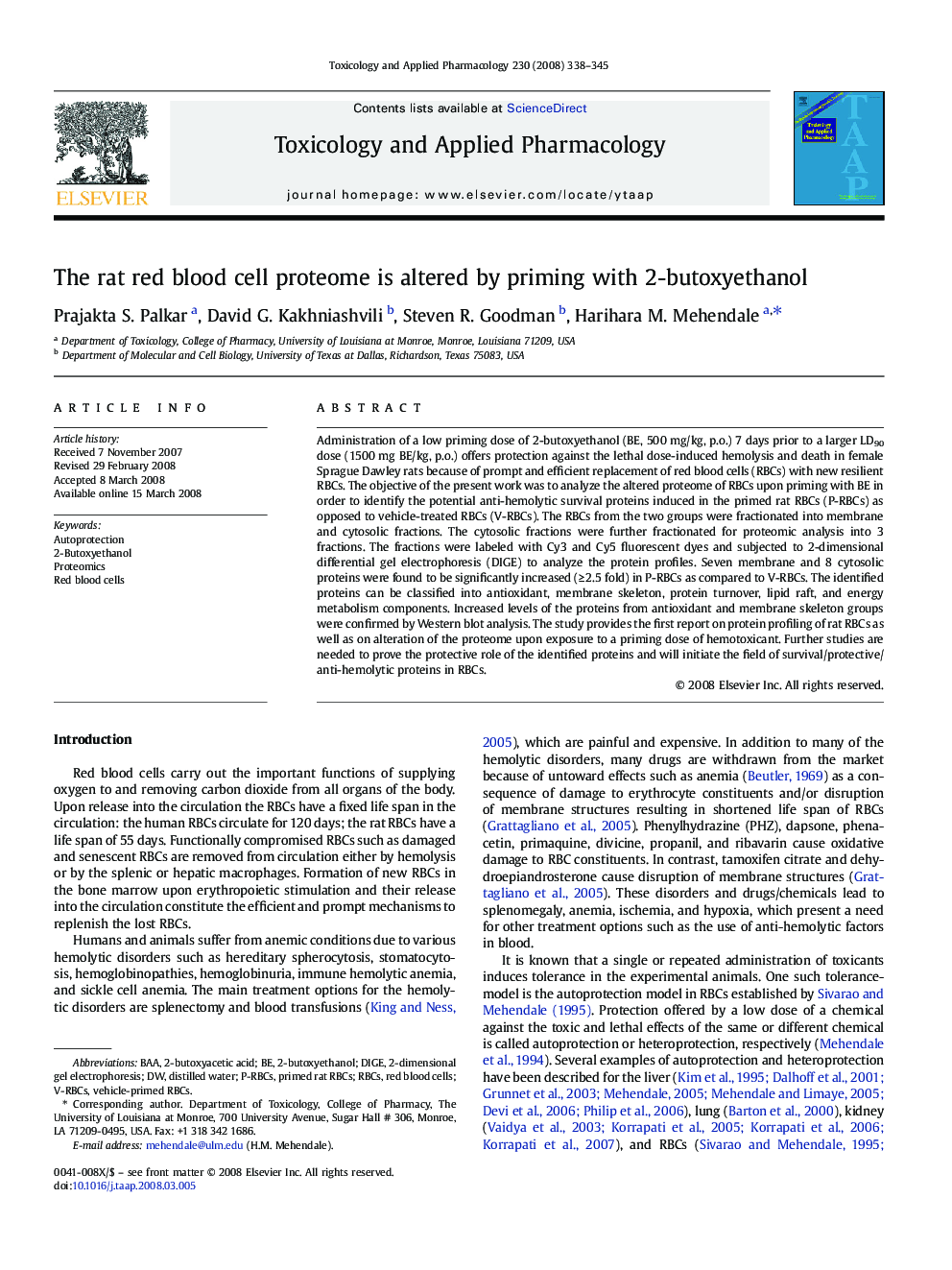| Article ID | Journal | Published Year | Pages | File Type |
|---|---|---|---|---|
| 2571341 | Toxicology and Applied Pharmacology | 2008 | 8 Pages |
Administration of a low priming dose of 2-butoxyethanol (BE, 500 mg/kg, p.o.) 7 days prior to a larger LD90 dose (1500 mg BE/kg, p.o.) offers protection against the lethal dose-induced hemolysis and death in female Sprague Dawley rats because of prompt and efficient replacement of red blood cells (RBCs) with new resilient RBCs. The objective of the present work was to analyze the altered proteome of RBCs upon priming with BE in order to identify the potential anti-hemolytic survival proteins induced in the primed rat RBCs (P-RBCs) as opposed to vehicle-treated RBCs (V-RBCs). The RBCs from the two groups were fractionated into membrane and cytosolic fractions. The cytosolic fractions were further fractionated for proteomic analysis into 3 fractions. The fractions were labeled with Cy3 and Cy5 fluorescent dyes and subjected to 2-dimensional differential gel electrophoresis (DIGE) to analyze the protein profiles. Seven membrane and 8 cytosolic proteins were found to be significantly increased (≥ 2.5 fold) in P-RBCs as compared to V-RBCs. The identified proteins can be classified into antioxidant, membrane skeleton, protein turnover, lipid raft, and energy metabolism components. Increased levels of the proteins from antioxidant and membrane skeleton groups were confirmed by Western blot analysis. The study provides the first report on protein profiling of rat RBCs as well as on alteration of the proteome upon exposure to a priming dose of hemotoxicant. Further studies are needed to prove the protective role of the identified proteins and will initiate the field of survival/protective/anti-hemolytic proteins in RBCs.
